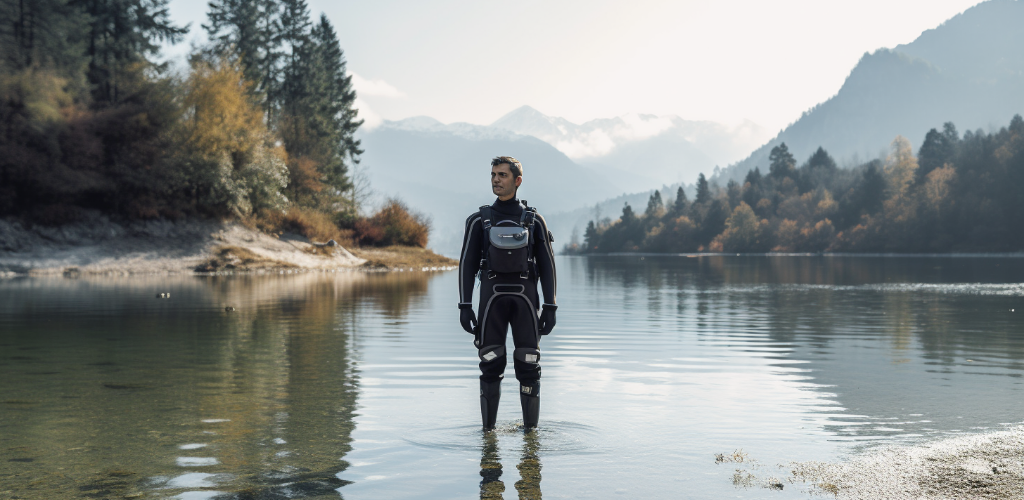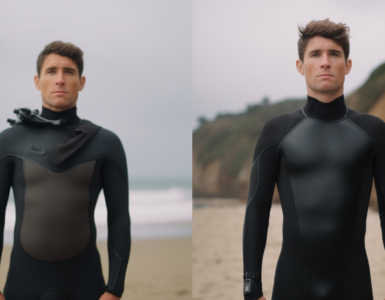When it comes to water activities, especially during colder seasons, drysuits are often the gear of choice. But have you ever wondered how these suits manage to keep you dry even when you’re fully submerged in water? Well, you’re about to find out. In this post, we’ll explore the fascinating world of drysuits and how they work to keep you warm and dry.
The Concept behind Drysuits
At its core, a drysuit is designed with one main goal in mind: to keep water out. This is achieved through a clever design that is both water-tight and breathable. Unlike wetsuits, which allow a small amount of water in to create an insulating layer, drysuits are sealed off completely from the water environment. This means, yes, you stay completely dry!
But how does it manage this feat? It’s all about the seals. Neck and wrist seals, typically made of latex or silicone, form a waterproof barrier that prevents water from entering the suit. Not only that, but most drysuits are also equipped with waterproof zippers to ensure no water can sneak its way in.
Different Types of Drysuits
Just like with any gear, drysuits come in a variety of styles and types, each designed for a specific set of activities. But what are these types, and what makes each one unique?
Well, there are essentially three main types of drysuits: shell drysuits, neoprene drysuits, and hybrid drysuits. Shell drysuits, as the name suggests, are made from a durable, waterproof shell material. They are designed to be worn with insulating undergarments and are ideal for activities where you expect to get wet, like kayaking or white-water rafting.
Neoprene drysuits, on the other hand, are made from the same material as wetsuits. They offer inherent insulation and are often used for diving in colder waters. Lastly, hybrid drysuits combine the best of both worlds, offering both the durability of shell suits and the insulation of neoprene suits.
So, whether you’re a diver, a kayaker, or a sailor, there’s a drysuit out there for you. But no matter what type you choose, the principle remains the same: keep the water out, keep you dry.
The Anatomy of a Drysuit
Ever wondered what makes a drysuit tick? How does it keep you dry and warm even when you’re submerged in water? Let’s break it down and explore the key components that make up a drysuit.
Seals and Zippers
The first line of defense in a drysuit is the seals and zippers. These crucial elements play a significant role in ensuring no water gets into the suit. But how do they do this? Well, the seals are usually made of latex or neoprene and are found around the neck and wrists of the drysuit. Their job? To create a tight, water-resistant seal against your skin.
Then we have the zippers. Drysuits typically use waterproof zippers that are either metal or plastic. These zippers are robust and designed to withstand pressure, thus preventing water entry. Without a doubt, seals and zippers are the unsung heroes of a drysuit’s design.
Material and Insulation
Next up is the material and insulation of the drysuit. Drysuits are commonly made from neoprene, trilaminate, or vulcanized rubber. These materials are chosen for their excellent water-resistant properties and durability.
Neoprene drysuits have insulation built into the material, providing both warmth and buoyancy. Trilaminate and vulcanized rubber drysuits, on the other hand, rely on undergarments for insulation. These undergarments can be adjusted according to the water temperature, making them versatile for different diving conditions.
Why Drysuits Over Wetsuits?
Now that we’ve looked at the anatomy of a drysuit, you might be asking, why choose a drysuit over a wetsuit? Well, let’s dive into that.
Temperature Regulation
One of the main advantages of a drysuit over a wetsuit is its superior temperature regulation, especially in cold water. Remember those insulating undergarments we mentioned earlier? They allow you to control the amount of insulation you need, depending on the water temperature. This isn’t something you can do with a wetsuit.
Furthermore, because a drysuit keeps you dry, it prevents heat loss caused by evaporation when you’re out of the water. This makes it ideal for surface intervals or when you’re on a boat in windy conditions.
| Feature | Drysuit | Wetsuit |
|---|---|---|
| Temperature regulation | Excellent, adjustable according to conditions | Good, but not adjustable |
| Keeps you dry | Yes | No |
| Insulation | Depends on undergarments used, can be adjusted | Depends on thickness of wetsuit, not adjustable |
| Comfort | High, especially in cold water | Lower, especially in cold water |
| Cost | Higher | Lower |
So, while drysuits might be more expensive upfront, their versatility and superior temperature regulation make them a worthy investment for many divers. Can you now see why drysuits are often favored over wetsuits for cold water activities?
How to Properly Wear a Drysuit
Ever dressed up in a drysuit? If not, don’t worry, we’ve got you covered! The first thing to remember is that drysuits are not your regular clothes, they’re specialized equipment. So, you have to put them on in a certain way to make sure they do their job effectively. Sounds daunting? It’s actually quite simple once you get the hang of it!
Step-by-step guide on how to put on a drysuit.
- Check the Suit: Before you put on the drysuit, inspect it for any damage or wear and tear. This includes checking the seals and zippers for any signs of damage.
- Apply Lubricant: Apply a silicone-based lubricant to the seals of the drysuit. This will make it easier to put on and take off the suit, and also prolong the life of the seals.
- Enter the Suit: Step into the drysuit, one leg at a time, followed by your arms. Make sure your feet are all the way in the boots and your hands are through the wrist seals.
- Zip Up: Once you’re in the suit, pull up the zipper. For rear-entry suits, you might need a buddy to help you with this step.
- Check the Fit: The suit should fit snugly, but not too tight. You should be able to move freely without feeling restricted.
- Wear the Hood and Gloves: The last step is to put on the hood and gloves, making sure they fit correctly and are comfortable.
Caring for Your Drysuit
Like any other piece of essential gear, your drysuit needs regular care and maintenance. After all, it’s not just a piece of clothing, but a lifesaver in cold waters. So, how do you make sure your drysuit lasts for years?
Here are some do’s and don’ts when it comes to drysuit maintenance.
List of do’s and don’ts in drysuit maintenance.
- Do Clean Your Suit: After each use, clean your drysuit with fresh water and a mild detergent. Avoid using harsh cleaners, as they can damage the material and seals.
- Don’t Store It Wet: Always dry your suit before storing it. Storing a wet suit can lead to mold and mildew, which can damage the suit.
- Do Check for Damage: Regularly inspect your suit for any signs of wear and tear. Pay special attention to the seals and zippers.
- Don’t Ignore Repairs: If you notice any damage, get it repaired immediately. Ignoring small issues can lead to bigger problems down the line.
- Do Store It Properly: Store your drysuit in a cool, dry place away from direct sunlight. Avoid folding the suit, as this can cause creases and damage the material.
Troubleshooting Common Drysuit Issues
Ever had a moment when your drysuit didn’t perform as expected? You’re not alone. But don’t worry, most issues are straightforward to fix. Let’s take a look at some of the common problems you might encounter and their solutions.
Leaks
Leaks can be frustrating, especially when you’re anticipating a chilly immersion. But don’t panic! Leaks are usually the result of damaged seals or zippers, and can often be fixed with a seal repair kit or zipper wax. It’s always a good idea to carry these in your kit bag. Remember, regular inspection of your drysuit can help prevent leaks.
Overheating
Ever felt too warm in your drysuit? Overheating can occur if you’re wearing too many layers underneath or if you’re exerting yourself too much. The solution? Adjust your undergarments based on the water temperature and your activity level. And don’t forget, hydration is key!
Difficulty Donning the Suit
Struggling to put on your drysuit? This is a common issue for beginners. Make sure the suit is thoroughly dry on the inside, use a suitable dressing aid if necessary, and take your time. Practice makes perfect, right?
Final Thoughts on Drysuits
Understanding how drysuits work, their benefits, and how to care for them is essential for anyone involved in water activities, especially in colder seasons. They are a game-changer, offering safety, comfort, and warmth. But like any gear, they require proper handling and maintenance to ensure they serve you well.
Have any tips or experiences you’d like to share about using drysuits? Have you encountered any issues not mentioned here? We’d love to hear from you! Feel free to share in the comments section below. Let’s learn from each other and make our water adventures even better!




